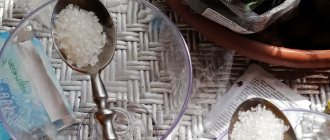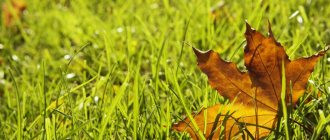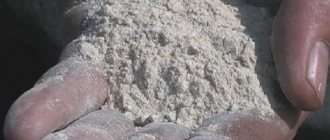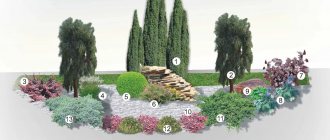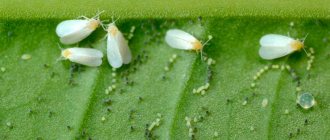Advantages of chicken manure as fertilizer
Chicken manure is an organic fertilizer whose content of pure nitrogen, phosphorus (P2O5) and potassium (K2O) is about 1.63%, 1.54% and 0.085%.
Let's look at the undoubted advantages of this fertilizer:
- Chicken manure fertilizer does not smell as strong as cow and horse manure.
- Chicken manure fertilizer is very rich in nitrogen and also contains large amounts of potassium and phosphorus.
- Chicken manure is an excellent soil enricher and creates good conditions for the growth of your vegetables, increasing water-holding capacity and beneficial biota in the soil.
- The high nitrogen content and balanced nutrients make chicken manure compost the best type of manure.
And now about the disadvantages of chicken manure, which you should carefully study before using fertilizer:
- The high nitrogen content in chicken manure, especially in fresh and liquid form, is dangerous for plants. Fertilizer made from raw chicken manure can burn and even kill plants. Therefore, it is important to know that chicken manure is not added fresh. It is used to make: ready-made granular fertilizers
- compost
- “compost tea” is a solution of chicken manure infusion.
Composting chicken manure softens the nitrogen and makes it suitable for use in the garden.
- Like other animal waste, chicken manure and litter can contain pathogens such as E. coli, Salmonella, Cryptosporidium and others. Before adding bird droppings or litter to the garden, it should be composted or cured. When composting properly, the temperature is about 70 degrees, which is enough to kill most pathogens.
Do not use cat, dog or pig manure in compost piles.
How to deposit
The selection of manure for fertilizing the soil should begin with the oldest heap, do not take horizontal layers, but disassemble the heap from top to bottom so that the manure is more even, with the same value.
Mixing the fertilizer with the soil (digging) should be carried out as quickly as possible (a maximum of 12 hours from the moment of application is recommended), since a significant part of the ammonia evaporates within the first 12 hours after application to the soil. The faster the fertilizer mixes with the soil, the less nitrogen is lost.
How deep to dig?
Covering the organic mass with heavy, moist soil prevents the access of air, and in such conditions the applied fertilizer takes a long time to decompose – it rots and becomes moldy. The rotting process means that the compounds that create humus are not deposited in the soil. Organic matter should be dug to such a depth that it can decompose during the growing season. The optimal digging depth depends on the density of the soil, the duration of application of fertilizers and the degree of their maturity, that is, on the fermentation of the manure during storage.
For example:
- Due to the high rate of mineralization of light soils (several weeks), natural fertilizer should be applied in smaller doses (15-20 t/ha, 150-200 kg per hundred square meters), but more often (every 2 years) with incorporation to a depth of 18-22 cm.
- On heavy soils, the decomposition of fertilizers takes several months, so it is recommended to fertilize in early autumn when digging, and it is better to embed it to a depth of several centimeters.
Things to remember:
- embedding too deep prevents the decomposition of organic matter;
- too small - it speeds up.
The depth of placement also depends on the dose of manure: the greater the mass, the deeper the placement. Deeper plowing on lighter soils is the result of providing more moisture for fertilizer decomposition, while there is enough air - even too much, so that its decomposition occurs too quickly in this place, and small amounts of colloidal particles limit the accumulation of humus.
It is also important to evenly distribute the fertilizer throughout the garden and field, which will greatly facilitate plowing and mixing with the soil.
Which plants to apply and not to apply to?
Chicken droppings are recommended for all types of vegetable, garden, garden and fruit crops, ornamental, potted plants, coniferous trees and lawns. Due to the fact that it is an environmentally friendly fertilizer, it is especially recommended for environmentally friendly growing of plants. It can be used on all types of soil.
Applying manure changes the pH of the soil. It has a high pH of 7.5 (even higher from laying hens). For example, spinach reacts well to it, but this way you can destroy blueberries, blueberries, and cranberries.
Manure should be used primarily for plants with high nutrient requirements and long growing seasons:
- corn;
- root crops - sugar beets, fodder beets, mid-early and late varieties of potatoes;
- mushrooms;
- some vegetables.
Poultry manure should not be used for:
- cereal crops;
- barley for brewing;
- grain legumes (clover, alfalfa);
- plants with a low need for nutrients, but at the same time easily lodging - buckwheat, flax.
Organic matter is added to fruit trees and shrubs in the fall - scattered on the surface of the ground and dug up. In subsequent years, fruit plants should be regularly mulched with composted litter (covered with a 2-centimeter layer 40-50 cm from the trunk) or watered with a solution of manure and water.
Dosage
It is recommended to use manure in doses of 10-15 t/ha (100-150 kg per hundred square meters), for the same plants and at the same time as traditional cattle manure.
Something to remember! The annual dose of applied manure should not exceed 170 kg N/ha (1.7 kg per hundred square meters). The optimal dose, depending on the nutritional needs of plants and soil fertility, may be lower than permissible. It is better to introduce less litter than too much. Too much dosage can lead to soil salinity, which is bad for plants.
Manure is applied to fruit trees in the following doses:
- dry chicken manure – 15 kg/10 m2;
- fresh – 3-5 kg/10 m2.
For vegetable crops for digging, kg per hundred square meters:
- potatoes – 50-70;
- tomatoes – 45-55;
- cucumbers – 55-60.
When using natural fertilizers frequently in large doses, special attention should be paid to the phosphorus content in the soil, excessive accumulation of which can pose a threat to the aquatic environment, and also causes phosphatization of the soil and oppression of plants.
To be sure of the composition of natural fertilizers, you can use the help of an agrochemical laboratory. The most important parameters to consider are nitrogen, phosphorus, and potassium. The results obtained will help calculate the dose of fertilizer that should be used so as not to exceed the permissible amount of elements.
Differences in the types of feed and the way poultry are kept affect the composition of the fertilizer:
- Chickens that roam around the yard eating grass provide more nitrogen than farmed chickens.
- The droppings of laying hens are usually richer in calcium.
- Litter with straw is rich in phosphorus.
Minimizing losses
Losses of nitrogen into the atmosphere when introducing manure can be significant, reaching 50%. It depends on the:
- air temperature when spreading fertilizer around the garden;
- method of application;
- soil reactions.
When using litter, you must follow several basic rules, thanks to which losses will be less:
- Chicken droppings are used immediately after removal from the chicken coop or after short-term storage.
- The litter is best used on cool, cloudy days.
- As with other natural fertilizers, it should not be applied immediately after or before liming.
- Immediately after spreading, mix the droppings with the soil.
Before using in the garden, manure is often mixed, for example, with straw, which allows it to be more evenly distributed over the soil. In addition, in this way we limit the possible negative impact of this fertilizer due to the high concentration of nutrients. Ammonia inhibitors can be added to the manure to reduce nitrogen loss and the odor of the manure.
Photo. Straw bedding is also a valuable addition to fertilizer. It enriches the soil with humus.
How and with what to dilute for liquid fertilizer, fermentation
There are 2 more rules for introducing chicken droppings for feeding:
- the litter must undergo fermentation;
- it always needs to be diluted.
Then watering with manure will lead to an increase in yield.
If it is used fresh directly under plants, they may not survive it (even voracious tomatoes). They will be overfed with fertilizers - they say that the plants “burn” (turn yellow and die).
Watering with diluted droppings is easy. However, it must be fermented first and then diluted.
The droppings straight from the chicken coop are very good, especially for feeding vegetables, fruit bushes, and trees. It contains ingredients that are quickly absorbed by plants. Unfortunately, although it is natural, it is not difficult to overfeed plants with it. Therefore, you need to know how to make liquid fertilizer from chicken droppings and how to properly prepare it. Then watering will become safe.
Step-by-step instructions on how to ferment chicken manure and how to dilute it for fertilizer:
- Pour water. Pour the droppings into a bucket (preferably plastic) or barrel. Add 10 liters of water. This can be tap water, rain water or from a pond. A bucket with a capacity of 10 liters will need 1-3 kg of manure:
- If it is old and has straw bedding, such as from a chicken coop, you can add more.
- If it is fresh, just collected from the chicken coop or pressed (in granules), then the dosage is less.
Leave in shade or partial shade to ferment.
- Fermentation . The fermentation process begins after a few days. Faster when it’s warm, slower when it’s cool. It is easy to tell that fermentation is continuing: foam forms on the surface. At this stage it is too early to use fertilizing. We'll have to wait a few days. If, after stirring with a stick, there is no more foam or only isolated bubbles appear, the manure solution is ready for use. Now it needs to be diluted (see point 3).
Photo. This is what the foam on the droppings looks like during the fermentation process. Here they used old manure from free-range chickens.
- How to breed. Fermented droppings must always be diluted. Most often the ratio is 1:10, that is, 1 part suspension to 10 parts water. However there are differences:
- when the plants are young, have weak roots or are experiencing drought, it is better to dilute the pulp more, in a ratio of 1:20;
- a lower concentration can be used, for example, to fertilize fruit trees or overgrown, well-rooted tomatoes.
Advice. It is better to use the fermented suspension within 2 weeks. Then she is the most useful.
You shouldn’t delay feeding too long for another reason – mosquitoes. In a bucket, in fermented liquid, mosquitoes love to lay eggs. Their development cycle ranges from 2 weeks (if it is very warm) to 5 weeks (if it is cold). Thus, by quickly consuming the slurry, hundreds of mosquito larvae and eggs are destroyed (without the use of chemicals).
Where to get chicken manure
Most bird keepers you can easily find near you will be happy to part with one bucket of bird droppings. Judge for yourself: for every 100 g of feed eaten by a chicken, about 40 g of litter is produced. The average laying hen eats 120–160 g per day, with an annual litter production of 17.5–24 kg. So they are willing to share chicken droppings with you anyway, but they can also sell them inexpensively. When purchasing, give preference to dried manure; it is easier to compost.
You can also buy ready-made fertilizer made from dried chicken manure in bags at many garden centers. As a rule, manufacturers additionally enrich the composition with microelements. If you choose ready-made fertilizer, then you can skip the section on composting chicken manure and the rules for its use: apply fertilizer based on chicken manure, following the manufacturer’s instructions, and for general development, go to the corresponding chapter of our article.
Chicken manure is sold in the form of granules, powder and as a concentrated liquid fertilizer
What birds' droppings, other than chickens, are suitable as fertilizer?
If you can’t find chicken droppings to feed trees, you can use the excrement of other birds:
- geese - safer and milder impact due to lower nitrogen content;
- quail - a more nutritious and valuable fertilizer;
- pigeons - contains more nitrogen;
- turkeys - almost similar in composition to chicken.
Granulated chicken manure
In the production of finished fertilizer, bird droppings are dried and converted into small granules or powder form so that they can be easily integrated into the soil. Pelleted chicken manure is rich in nutrients and great for many plants, particularly vegetables. Dry chicken manure does not have an unpleasant odor and does not acidify the soil, since it has an acidity close to neutral (pH - 5.9-6.1). Granulated chicken manure is sterilized during production, which greatly simplifies its use.
Value properties of chicken manure
Chicken droppings have a rich composition. At its core, it contains the elements necessary for plant nutrition:
- nitrogen (up to 4%);
- easily digestible phosphorus (up to 2.5%);
- potassium (up to 2%);
- calcium (about 1%);
- iron and magnesium (up to 0.3%).
It contains zinc, cobalt, sulfur, copper, boron, other minerals and substances that stimulate active plant growth.
Most of the nutrients in manure are in water-soluble forms.
The slightly alkaline reaction of chicken manure has a very good effect when used on acidified soils, as well as on crops sensitive to acidic environments
This organic fertilizer has other beneficial qualities:
- has no specific odor, as it does not contain ammonia compounds;
- after fertilizing with chicken manure, the soil bears fruit well for 2–3 years;
- restores microflora and soil acidity.
How to make an infusion from chicken manure
Like the infusion of cow dung, popularly called mullein, chicken manure can be infused in a barrel of water. Pour the droppings into a laundry bag, add a weight (or a stone) and place it in a barrel for watering. Compost tea is popular among gardeners who grow flowering plants and greenhouse vegetables. The components are infused in a barrel for about two weeks, then dilute the strong solution with water in a ratio of 1:10 (the color should resemble weak table tea). The prepared solution can be poured onto the soil around the plants after preliminary watering or rain to get an instant “energy drink” effect. Do not apply fertilizer on dry soil!
In the flowering phase, such fertilizing will be useful for garden strawberries (strawberries) and vegetable crops, especially cucumbers: 0.5 liters of “tea” per plant. The infusion can be stored in bottles for about 3 months; beyond that there is no point.
Fertilizers are applied strictly after watering
How to make compost from chicken manure
In addition to feces, chicken droppings also consist of urine, feathers, undigested food and coop litter. Composting breaks down these materials into a plant-friendly form. Composting chicken manure is easy. Here are your main steps towards your cherished goal:
1 Collect or locate litter. Chicken owners typically use bedding such as shavings, sawdust, dry leaves or straw to provide a dry bed for chickens and control odor and pests. If you have chickens, you can use your own chickens' bedding. If you don't have chickens, you can find a farmer who does and will likely be happy to donate used chicken bedding to you.
2 Select a balance of components for composting. How much bedding and how much manure should I put in? Everything is simple here. Let's remember the main components of composting: carbon (brown parts - chicken coop litter), nitrogen (green parts - chicken manure), air, humidity, volume and temperature.
The combination of 30 parts carbon and 1 part nitrogen creates the perfect environment for microbes to break down organic material to produce compost. By combining coop litter and chicken manure, you can achieve the ideal carbon to nitrogen ratio. Because different litters vary in composition, the ratio of litter to manure will vary depending on the type of litter used. To keep things simple, most gardeners follow the general rule of 1 part brown to 2 parts green. However, since chicken manure is so high in nitrogen, you may have more success using a 1:1 or even 2:1 mixture.
3 The next step in composting chicken manure is to take the used litter and place it in a compost bin. Use the "hot compost" recipe. By combining the correct ratio of bedding and manure, form a pile. Add hot water in layers (the material should be about as wet as a well-wrung out sponge). Heating and processing of manure into compost occurs due to the active reproduction of aerobic bacteria. It is recommended to cover the composter or pile with dark material to maintain a fairly high temperature for 3 days and protect it from precipitation.
It is important to keep the pile dry. When bird droppings get wet:
- it smells stronger
- attracts a lot more flies
- it loses about 30% of its nitrogen as gas
Heating is necessary to kill pathogens. When composting, it is necessary to maintain adequate drainage of the pile and turn the pile weekly to provide oxygen. If the compost pile cannot be turned every week, drying the chicken manure before adding it to the pile may be a better approach.
4 Repeat the heating process. Once the center of your compost pile reaches a temperature of about 70 degrees for three days, it will begin to cool. Once the pile has cooled, spread the center and move the core material to the edges and rake the edge material toward the center for heating. Repeat the process of inserting the edges into the core at least 3 times.
For composting organic matter, it is most convenient to make a two-section pen.
5 Let the compost sit. On average, it takes three to six months to prepare compost from chicken manure, which means a year in average conditions. The exact time required to compost chicken manure depends on the conditions in which it is being composted. If you are unsure how well your chicken manure has been composted, you may want to wait before using chicken manure compost. Chicken compost is ready when most of the material is dark, crumbly, and sweet-smelling, like good greenhouse soil.
If you are new to composting and want to learn how to do it, check out our article here >>>>.
Granulated chicken manure is applied in advance, before planting seedlings.
Dosage and timing of application
When making chicken manure as a fertilizer, you must adhere to the proportions of infusion and water. If there is a lot of the last component, then feeding will not bring the expected result. If there is a lack of moisture, the solution will burn the roots. The tincture is diluted per 1 liter of water depending on its condition and further use.
Chicken droppings in a pack
The table shows the rules for applying chicken manure to fertilize the soil:
| Time and method of use | 1 liter of water per liter of partially rotted product | 1 liter of water per liter of completely rotted composition |
| In autumn after harvest before fallow | 5-10 | |
| Spring watering under fallow | 5-30 | 5-20 |
| Before planting seedlings | 100-150 | 10-30 |
| Tilling the soil around the seedlings | ||
| Watering during the growing season | 50-100 | |
| Treatment during flowering | 150-200 | 50-80 |
| Watering when the crop is ripe | 200-300 | 100-150 |
| For mineral and nutritional deficiencies | 150-200 | 30-50 |
| Foliage treatment | 200-300 | 50-70 |
Note: to irrigate beds with liquid fertilizer, you can use a drainage pump designed to work with sewage. A hose is connected to the container with the liquid and liquid is supplied to the area through it.
What can you fertilize with chicken manure?
Chicken manure will benefit plants that require a lot of nitrogen. Generally, the plants with the highest nitrogen requirements are leafy plants such as brassicas. However, many plants will benefit from the nitrogen and other nutrients contained in the droppings.
Do not add chicken manure to ericaceous (acid-loving) plants such as azaleas, rhododendrons, hydrangeas or blueberries, as chicken manure-based fertilizers typically have a slightly alkaline pH.
It's also important to remember that chicken manure can also enrich the soil in a woodland or orchard without any intermediate steps. This can be especially beneficial for berry bushes with high nitrogen needs, such as plums and blackcurrants.
What plants can be fertilized
Chicken manure is ideal for fertilizing many garden and vegetable crops: potatoes, tomatoes, eggplants, onions, garlic, strawberries, fruit trees, flowers, etc.
- onions, garlic and other greens can be fed several times throughout almost the entire season, with the exception of the period of active growth of these plants, with litter (3.5 kg/sq. m) or without litter (2 kg/kg. m) manure;
- white cabbage can be fed with both litter (3 kg/sq. m) and non-litter (3 kg/sq. m) chicken manure; after the main feeding, you can then apply 2-3 additional ones, 1 liter per plant;
- pumpkins and tomatoes are fed in early spring with litter (6 kg/sq. m) or non-litter (4 kg/sq. m) fertilizer. Further fertilizing is carried out at the rate of 5 l/sq. m;
- Strawberries are fertilized in the spring, 4 months before planting - this will protect the root system from the negative effects of methane and ammonia. It is recommended to feed strawberries with chicken droppings for 3-4 years in a row;
- Root crops are fertilized in the fall: with litter (3 kg/sq. m) or without litter (2 kg/sq. m) manure. During the growing season, you can apply liquid fertilizer at the rate of 4 l/sq. m;
- potatoes are fed only in the fall and only with bedding manure - 4 kg/sq. m; Chicken manure cannot be used during crop growth.
During the gardening season, fertilizing should be applied carefully - excessive amounts lead to the accumulation of nitrates in the leaves.
Fertilizing azaleas, camellias, heathers and blueberries is not allowed; these plants do not tolerate high levels of sodium salts contained in the droppings.
Spring and autumn application of chicken manure fertilizer
The NPK ratio in chicken manure varies, usually from 3-2.5-1.5 to 6-4-3. Accordingly, the rate of fertilizer application for digging is approximately 5.5-6 kg per 10 m2.
During both autumn and spring planting of seedlings, you can add one glass of granulated chicken manure to the planting hole, thoroughly mixing it with the soil so that the roots of the seedling do not come into direct contact with the manure when planting.
When planting vegetable seedlings in the spring, add 1 tbsp to the hole. granulated chicken manure, if the beds were not previously filled with organic matter and other fertilizers.
To feed fruit crops in the fall or spring under mature fruit trees, dry chicken manure in granules is applied to the tree trunk and embedded in the soil: approximately 2 cups per adult tree; for berry bushes - raspberries, currants, gooseberries within a meter radius - 1-2 cups.
Before adding composted bird droppings to your garden, think about what you are growing. Here are the basic rules for adding chicken manure:
- Never water or spread compost or granulated chicken manure on or around the leaves of edible plants or root vegetables that will soon be harvested, such as radishes, beets, carrots, potatoes.
- If you're growing "sensory" crops—plants that will have direct contact with the soil—as well as leafy vegetables and strawberries, it's best to avoid manure-based compost as mulch. Add this compost or granules in the fall when preparing beds or in the spring when planting.
- Because composted poultry manure may contain trace amounts of salmonella, direct contact with soil or splashes from watering can spread the bacteria, so it should be used carefully as a mulch material.
- "Tall" crops, such as flowers, broccoli or corn, may be more suitable - they are more difficult to contaminate. Simply spread the chicken manure compost evenly around the garden, working it lightly into the soil.
Aging compost of poultry manure and litter reduces pathogen populations, creating unfavorable growing conditions for plants. Chicken manure-based compost that is too old is completely useless.
Composted poultry manure should be applied at least 90 days before harvest of non-ground contact crops (tomatoes, cucumbers and peppers); and no later than 120 days before harvesting lettuce, strawberries, beets and carrots.
Features of fertilizing
If we compare chicken excrement with farm animal manure, there are no serious differences between them.
Only in a fresh state does droppings contain more nitrogen, intestinal enzymes and some other elements due to the fact that they combine with urine at the outlet. But over time, ammonia evaporates, and other substances break down. As it dries further, the droppings are practically comparable in composition to all other excrement, and after overheating, all indicators are averaged. Good to know: The best compositions for feeding seedlings
However, chicken manure as a fertilizer has some advantages:
- it is less washed out of the soil, does not increase its acidity, and does not saturate it with nitrates;
- contains elements necessary for most cultures;
- produces a prolonged action (decomposes within 3 years);
- increases plant yield by 25–40% and reduces ripening time by an average of 2 weeks;
- increases resistance to infections, pests and adverse weather conditions;
- prevents the formation of mold on the soil surface;
- is universal - suitable for all garden crops;
- easy to store, does not cake.
The only downside is that the concentration of active substances is too high and the presence of some aggressive components, which, if applied incorrectly, can cause problems such as:
- burns of the root system or above-ground parts and associated diseases up to the death of plants;
- impossibility of using land for planting garden crops throughout the year.
Therefore, before fertilizing a garden bed with chicken manure, you need to make sure that it is diluted to an acceptable concentration.
Using chicken manure in a greenhouse
The granules can be used for autumn soil preparation of beds in the greenhouse for the next season (400 g per 1 m2 + two shovels of compost), or applied every 4-6 weeks during the growing season.
Granulated chicken manure is also suitable for spring planting: 7-10 days before sowing or planting new seeds, but the dosage should already be half as much: 200 g per 1 m2. To do this, sprinkle the ground evenly with chicken manure granules and mix well. After sowing the seeds and planting, water well if the weather is dry.
After applying fertilizer, be sure to water the plants thoroughly.
Benefits of granular fertilizer
The advantages of granulated chicken manure include the following:
- Virtually unlimited shelf life even when opened.
- It has a prolonged effect , that is, nutrients enter the soil gradually over a long period.
- Can be used by eye, unlike powder . In addition, powdered manure applied to the ground before watering or rain can produce a burst of nitrogen, a large single dose of which in plant nutrition leads to the deposition of nitrates. With granules, such a result is excluded, since they become soaked gradually.
- Fertilizer granules also have a hydrogel effect , that is, they absorb moisture and retain it, then release it gradually. This ability is especially important during dry periods.
- It is easy to prepare aqueous solutions , and less water is required than when using powdered manure.
Chickens in summer at their summer cottage - the main points of keeping laying hens from choosing a breed to organizing walking and feeding
Read
Chicken droppings are used as fertilizer. Methods of use as live food, in the form of dry granules and compost
More details
How to fertilize cucumbers with chicken droppings
Like most cucurbits, cucumbers are essentially vines. You should start from this postulate. If there is more nitrogen in the fertilizer (let’s say you focus on manure, mullein, fermented nettles, urea, etc.), your cucumbers will become a green mass and a jungle will grow. Therefore, first, decide which method is more convenient for you: add fertilizers in the fall when preparing the beds; add in spring when planting seedlings; apply ready-made liquid fertilizers during the season; mulch plants with organic matter; make liquid fertilizers yourself.
You can find out how to properly feed cucumbers here >>>
Now absolutely any ready-made fertilizers are good, choose complex ones, without bias towards any one element. If you decide to use chicken manure for cucumbers, it makes sense to take a ready-made granular version or use annual, well-decomposed compost. Two feedings per season are quite enough. If you have been filling your beds with organic matter, chicken manure can only be used on weakened plants that clearly need a boost to growth. It is better to fertilize cucumbers in a greenhouse with a solution of chicken manure infusion during the formation of the first flowers, and not at the seedling stage, so as not to burn the young roots.
Lack of microelements in cucumber
To prepare the solution, the quantity of granules specified by the manufacturer is poured with water and mixed. Thus, when fertilizing non-flowering plants, a concentration of 1 part of dry matter to 50 parts of water is used, and for watering adult bushes - 1: 100.
You will find more useful tips on growing cucumbers here >>>
Cooking methods
Liquid concentrate
For a personal or suburban garden plot of a standard 6 acres, a 100 liter container filled with 1/3 fresh manure is more than enough. The rest of the volume is topped up with warm water, everything is mixed well, and in order to avoid specific “aromas,” the barrel is covered with a lid with a polyethylene gasket for better tightness. This will serve as an additional way to avoid nitrogen leakage from the solution.
You can also add iron sulfate to the container to reduce the smell - instructions for this addition are on the pack of vitriol, where the proportions of application are indicated.
This solution is infused for 3-4 days. The working solution for application to the soil looks like a liter of infused liquid diluted with 10 liters of water.
This concentrate is usually prepared at the beginning of the gardening season, and it is designed for the entire growing season of plants, until late autumn.
Compost
In a hole or wooden box lined with polyethylene, a layer of peat is poured onto the bottom, followed by sawdust from deciduous trees and/or straw, then alternating layers of dung and straw/sawdust. To speed up the rotting process, you can add dung worms to the compost. If the smell bothers you, cover the compost with film.
Liquid fertilizer
1 part of dry litter is filled with 20 parts of water. Stirs. Let it brew for at least a day. Before using this form of fertilizer, the soil is pre-watered or fertilized immediately after a good rain.
The safest type of organic fertilizer made from chicken manure. The main thing is not to pour such a solution directly on the plants, but only on the ground around it. Fertilizer consumption is about a liter per 1 bush of berry bushes or 0.5 liters per strawberry or potato bush. But when fertilizing potato bushes with such a liquid solution of chicken manure, you need to remember that they need additional potassium fertilizing.
Using clean fresh manure
Only in the fall, after harvesting. Or in the spring, while the snow has not yet melted, scatter chicken droppings dried over the winter directly on top of the snow cover at the site of future beds. As the snow melts, the fertilizer will seep into the ground in a form ready for absorption by plants. 1 kg of manure is scattered over 1 square meter of garden area for those crops for which chicken manure is suitable. It is impossible to scatter and water from above - the manure must be dug up with the soil to the depth of half a shovel.
Granular litter
It is prepared at large poultry complexes using special equipment that heats the raw material to 600⁰C, which completely disinfects the manure and neutralizes the ammonia and methane it contains.
The methane extracted during heating at the most technically advanced enterprises is used to replenish the fuel with which the drying and granulating process takes place, that is, an environmentally friendly and closed cycle is obtained.
At home, an analogue of granulated chicken manure can be obtained by mixing it with crushed peat and drying it at elevated temperatures. Storing such fertilizer in containers where there is no access to moisture, but there is free access to oxygen.
To prepare the solution, use any container except aluminum. Having poured one part of the granules into it, it is filled with 25 parts of water (unless a different ratio is indicated on the packaging of such granules). Then you need to infuse this solution for 50-70 hours to completely dissolve the solid component and properly ferment the solution.
Fruit trees are watered with this solution at the rate of 10 liters around the trunk. If you water berry bushes, then apply 5 liters into the ground around them. If watering fertilizer is done for greens and vegetables, then it is poured into the rows.
Depending on the type of soil, watering with a solution of chicken manure is done 2-3 times per season. Sandy soils are watered more often.
Unlike granules, compost requires complete dissolution in water, and therefore complete readiness for use, from 2 to 4 hours. You just need to make sure that the compost is really well rotted, otherwise the roots of the plants under which it is applied may burn.
It is better to fertilize with solutions in the spring, before planting the crop. In the fall, it is better to add solid fractions and carefully dig them up with the soil.
How to fertilize tomatoes with chicken manure
Tomatoes react poorly to excess nitrogen in the soil, so it is better to use chicken manure as an infusion and, in case of weak growth, fertilize it twice:
- The first time three weeks after planting the seedlings;
- Repeat feeding a second time in a month.
Tomato leaves will tell you whether the plant is sufficiently fertilized. If the plants grow too actively, the leaves and stems have become thicker, you should not apply more fertilizers, this threatens to result in a lush green bush without ovaries and fruits.
There is no need to feed strong and healthy seedlings just in case and unnecessarily
Dry granulated chicken manure is applied in the fall after harvesting when preparing beds. It is moistened with water, evenly distributed over the entire surface of the soil, then leveled and left until the spring thaw. During the winter, this fertilizer is well processed, and in the spring you can start planting plants.
You will find more useful tips on growing tomatoes here >>>
When is the best time to fertilize - timing
When is the best time to introduce manure into the soil depends on the type of soil (mechanical composition), topography and climatic conditions, for example:
- the best results are achieved by applying organic fertilizers in summer or early autumn;
- on heavy soils, autumn fertilizer gives better results than spring;
- On light soils, spring application gives the best effects.
On light soils, especially on slopes and in regions with high rainfall, organic fertilizers decompose quickly. And after the autumn application there is a strong leaching of nitrogen and partly potassium. On heavier soils, decomposition occurs slowly, and the better sorption properties of these soils limit excessive leaching of components.
The best time to apply fertilizer is on a calm, cloudy or slightly rainy day because that is when the least amount of nitrogen (as ammonia) is lost to the atmosphere.
Adding fresh manure with a lot of straw may cause a decrease in yield. Application of manure during the summer months is generally not recommended in years when liming is planned, as calcium accelerates the decomposition (mineralization) of manure, causing some loss of nitrogen and phosphorus. However, if treatments are necessary, calcium fertilizers should be applied to the stubble and manure should be applied in late fall or spring at intervals of at least 6 weeks.
The droppings can also be successfully used for already planted plants. For vegetable crops, it is recommended to distribute fertilizers evenly and mix them with the soil to a depth of approximately 15 cm. Then you can plant the vegetables. The same is true for field crops. In the same way, you can prepare the soil for sowing in the fall.
How to fertilize strawberries with chicken droppings
Garden strawberry (strawberry) plants have a high relative nitrogen requirement in early spring and late autumn. In early spring, plants experience a period of very high energy costs as they begin to shoot and flower. Using conventional methods, chemical fertilizers with nitrogen, phosphorus and potassium can be easily added to maintain essential nutrients and ensure berry growth. But for a follower of organic methods, it is better to maintain the level of nitrogen in berry plantings using natural methods.
Aged composted chicken manure is a good source of nitrogen, but you must be careful not to add too much nitrogen to strawberries, as this can cause excess vegetative production and reduced berry production. Never put raw, fresh chicken manure on strawberries - you will burn the roots. Simply spread the chicken manure compost evenly over your garden beds as you would regular compost.
Advantages and disadvantages
The benefits of this type of fertilizer are not limited to its natural origin. Other positive qualities:
- suitable for any soil;
- has a beneficial effect on the composition and structure of the soil;
- quickly infused and diluted compared to mullein;
- available (can be purchased at any specialized store);
- is an effective source of nitrogen.
Disadvantages of the litter:
- organics are not recommended for root crops;
- be sure to dilute the fertilizer with water;
- it is prohibited to use simultaneously with phosphate rock and ash;
- an excess increases the nitrate content in the crop.
